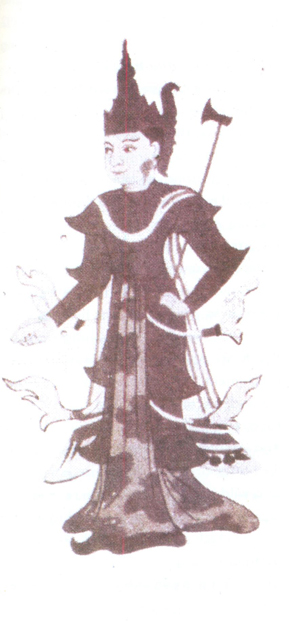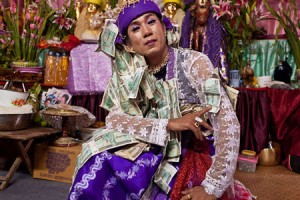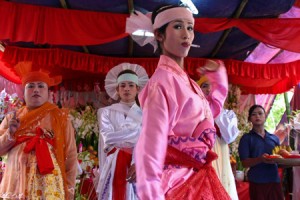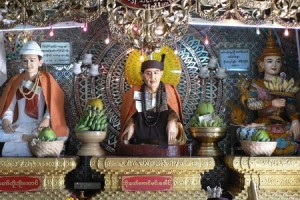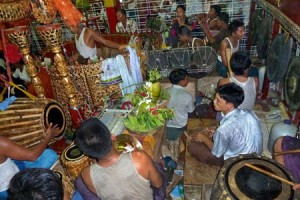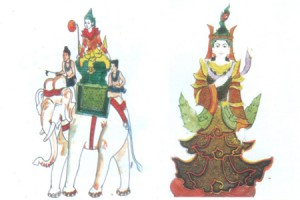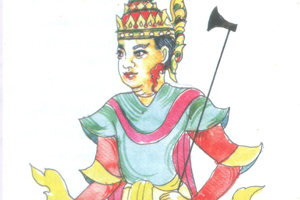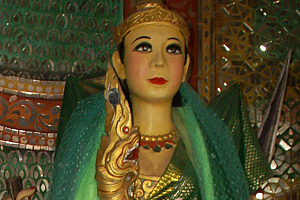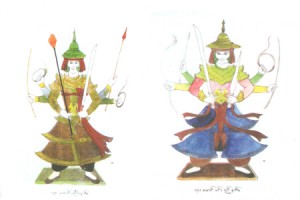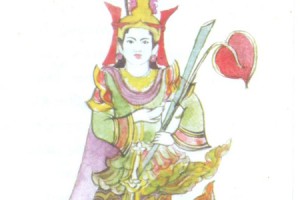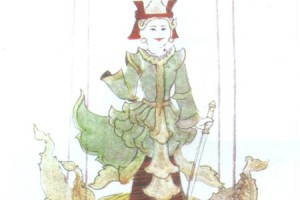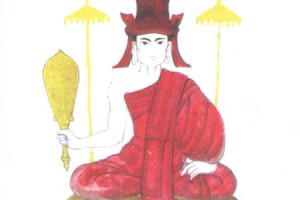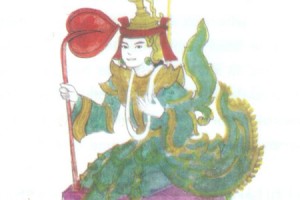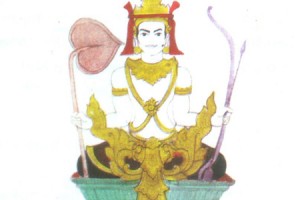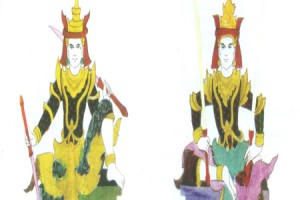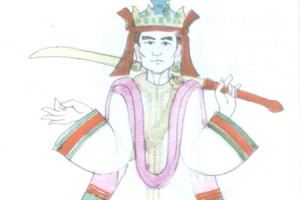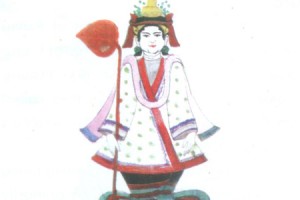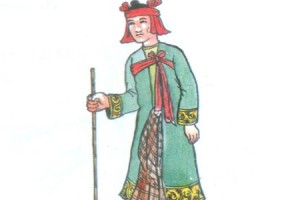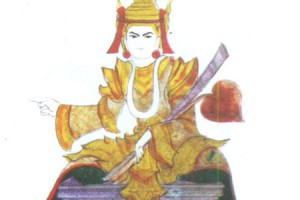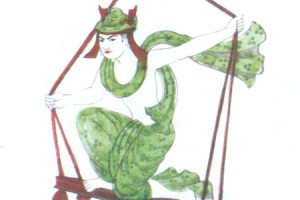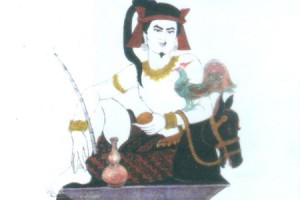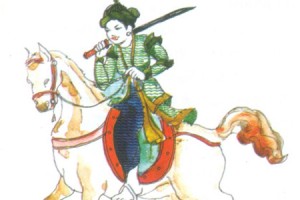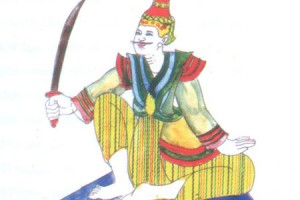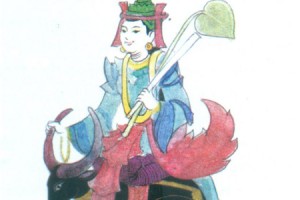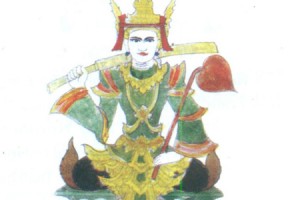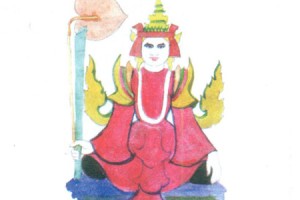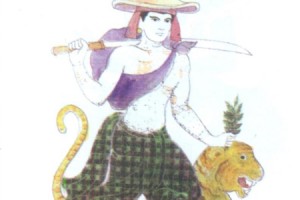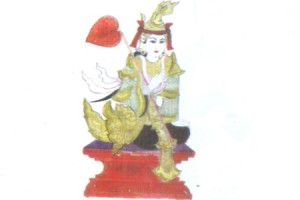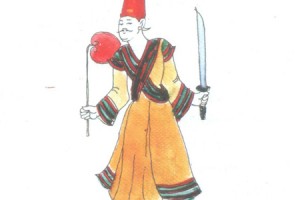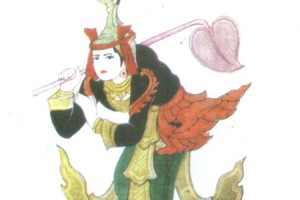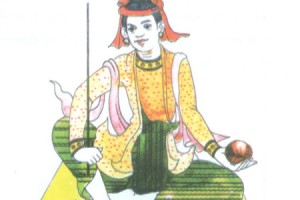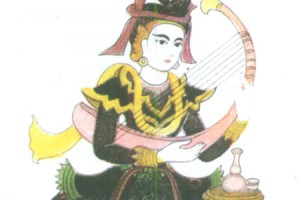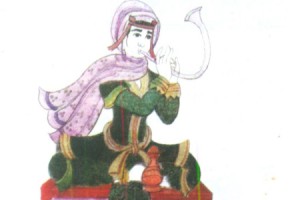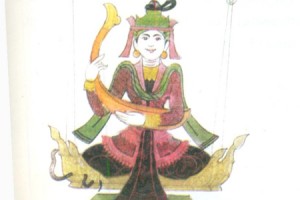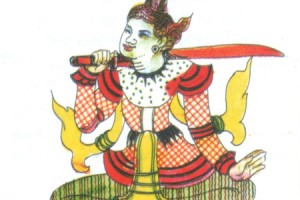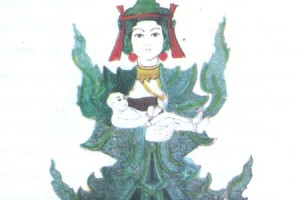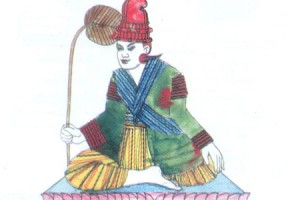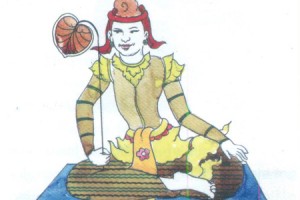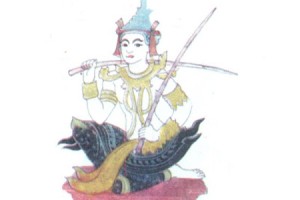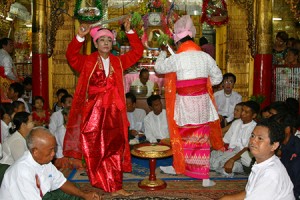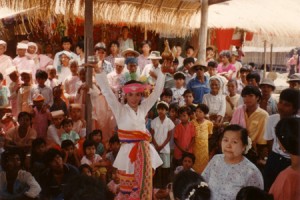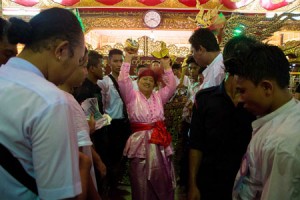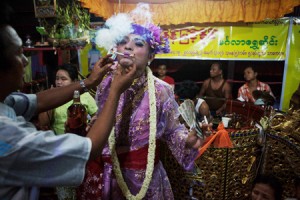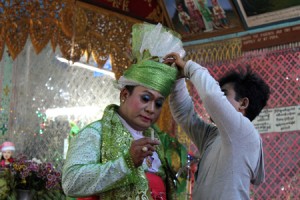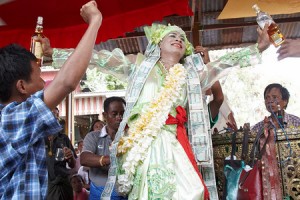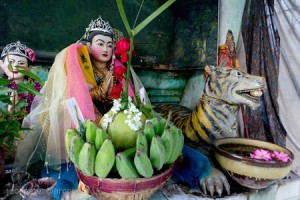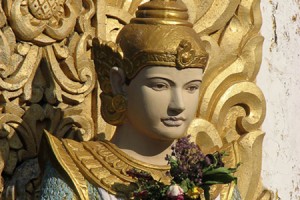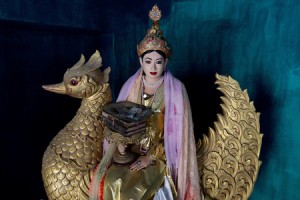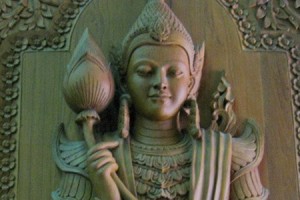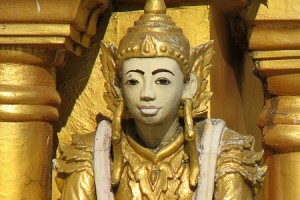Myanamr Nats (Spirits)
Almost all the Myanmar people, except those who are true Buddhist, have faith in the Nats and worship them. They are obsessed with fear, fright, respect, and obeisance in their mind, thereby thinking of Nats’ mystic power, they regard them as a refuge and shelter for their safety and prosperity. The fact that since when obsession had rooted in the mind of our ancestors could not still be traced. According to the concept of Braman, there existed all kinds of Nats(Deva) on earth long before the advent of Buddhism. In their (would-be Nats) previous lives, they were extraordinary human beings of bravery, brilliance, and gallantry, so the people used to believe that they could fulfill the wishes of good luck, good fortune, good health, and prosperity, otherwise contrarily the Nats could give any kinds of trouble, pain, suffering and distress if someone disturbed in doing any mistakes against their way of life.
People also believed That when someone, outstanding or ordinary, miserable or blissful died he would instantly become a Nat, even though those abruptly died of accident become more powerful than those who met their death naturally with old age or any kinds of disease.
Among 37 Nats except for thet Ka Raja (The Gya Min) the rest included all walks of life from famous powerful heroes, indelible, memorable, odd and queer persons to generals and king inclusive. Some Nats had long been randomly chosen from among the descendants of very powerful super Nats and listed them as Nats irrelevantly. Some Nats had become into Pra World (existence) since 13th to the 17th century, their ages are estimated to be about in between 400 and 800 years, however practically there is no concrete evidence what so ever.
Each and every Nat has its relevant materials, there also are historical facts on their past about how and why they had become Nats having different annual festivals of Paying obeisance to them by the people who have strong faith in them. The celebrations to be made in line with their guidance straight to their amusement. Nowadays there were contradictory versions that enlisted additional Nats into the original 37 Nats.
According to the original list of Nats who had become Nat spirit during the reign of some 5 kings. Emergence of some Nats happened to be quite relevant with historical facts- e.g In the Myanmar Nats spirit world, the most out sanding 2 Nats called Mingyi and Mingalay(a) Shwe Hpyin Nyi Naung (2 Brothers), their mother Mei Wunna, Poppa Mother Royal, the wife of Bagan hero Byatta the marathon runner, who was assigned a Herculean task of going to Poppa every morning all the year round to bring back royal flowers to Bagan not later than the first half of morning section without fail.
Another outstanding female Nat spirit was Ma Shwe Oo, named Taung Daw Thakin Ma Nat (Lady of Mount Royal) who was killed by a tiger at the command of Mingalay Nat spirit who tried to gain Ma Shwe Oo’s hand whenever her husband Ko Yin Maung was away on the Teak felling and rafting business, and all the time his proposal was being turned down as she was not a maiden, but wedded wife of Ko Yin Maung, however, Mingalay Nat felt annoyed and was most indignant with her repeated refusal finally let his riding tiger kill her once and for all.
When Ko Yin Maung returned from Meizar forest, floating down Teak rafts along Ayawaddy, and got to village Taung Byone, he heard the bad, bitter and bizarre news of his wife Ma Shwe Oo’s tragic death. Having learned that Ma Shwe Oo was killed by a mystic tiger at the command of his rider master, Mingalay Nat spirit he came across the place where her waist fastened scarf dropped off, he abruptly died of heart failure then and there. Thus widower Ko Yin Maung becomes a Nat spirit called simply his old name Ko Yin Maung Nat.
When the guardian of Shwe Phyin Nyi Naung was murdered and became Nat Popa Medaw spirit people called him Mandalay Bodaw Nat (Grandpa of Mandalay). Belief and faith in existence and presence of Nat spirit traditionally began from the time of Panbei (Blacksmith) Maung Tint Dei, a strong man of Tagoung up till now. If one studied the Nats, it is necessary one should be well acquainted with the basic fundamentals of Myanma History.
In Myanmar history, at times there appeared some Myanmar city-states had temporarily fallen under ethnic Shan and Mon dominions. The history of Nat worship had begun since the time of Tagaung dynasty. Then Tharei Khit Tra, and Bagan had been established since 483 B.C till 1298 A.D, then rival states, Myin Saing, Pinya and Sagaing were under Shan domination until 1364 A.D. Then and there, another rival state Taung Ngu came out between 1313-1450 A.D. Hanthawaddy Pegu stood rival with upper Myanmar Inn Wa (Ava) for 20 years from 1581 till 1751 A.D. After downfall of shan dynasty, there came out Konbaung dynasty led by the king Alaung Phaya in 1757 A.D till the last king Thibaw in 1 885.
The storey of Nats was handed down from the past, so also traditions were verbally passed on by the elders of the tribe. So there never was any concrete evidence of relevant inscription or ink inscription on stucco or palm leave letters. 37 Nats were categorized in line with time and type of death. In the group (1) There listed 9 Nats who were inclusive of 3 eras, namely Tagaung, Bagan and Thareikitra, Nat group led by Panbei Maung Tint Dei of Tagaung. In the group (2) there included 9 Nats, group (3) 11 Nats, group (4) 4 Nats and in the group (5) 4 Nats, thus totaling altogether 37 Nats. Having authority and power Setka, Tha Gya Min, the king of all Nats ruled over the 6 planes, the places of abode where higher and lower class Nats live inclusive of 37 Nats who are supposed to live on earth.
The cult of Nat spirit was assumed to have been existing since the time of primate age. Each and every nation has its faith and cult of Nat spirit that took place at the top. Whereas in Myanmar there co-existed both Buddhism and Hinduism since 2000 years ago, thereby being mixed with Hindu faith and worship of several Gods and Nats including Vishnu, Surasati and Mother Sandi. First and foremost worship of Nat spirit came out at the time of the king Theilinkyaung in Bagan, because there arrived the strong man, blacksmith Maung Tint Dei and Sister Shin Myat Hla in the guise of Nat spirits at Bagan.
All 37 Nats except Setka Raja, The Gya Min had died in upper Myanmar are purely Myanmar Nats. With reference to the 37 chief Nats in Buddhist Suttan, there appeared inside 37 Nats and Outside 37 Nats. Thereafter as the Number 37 became so famous and popular that it was widely used as – songs 37, singers 37, dancers 37 kinds, sword-play 37 ways, martial arts 37 methods, defense 37 steps, shields 37 gongs, 37 beats and oars 37 pieces.
Though relating to the Nat history of 2 Brothers, Shwe Phyin Nyi Naung, Ma Shwe Oo and other spiritual Nats such as – Taung Daw Thakin Ma (Madam of Mount Royal), Min Nyi Naungs’ baby-minder Mother royal, Poppa Mother Royal, her daughter, Khin Ma Tha Nat, U Shin Gyi’s mother Mei Phyu Nat, Royal Cave Madam, Mon Ko Min Kyaw, Koe Myo Shin ( spiritual head of nine Towns), Mother goddess of waterway crafts, U Shin Gyi Nat ( Spiritual authority over delta region of lower Myanmar) and Ma Aung Phyu, a female spiritual Nat, yet all these Nats were excluded in the Nat gradation list.
In the history of Myanmar Nats, The Gya Min was supposed to be supreme commander of all spiritual Nats of those higher class Nats in order of merit reside on the 6 tired planes, the lower class Nats stay around us in the same world. The Setka whom the Buddhists in India worshipped was the same person to whom Bramans had formerly paid obeisance called Indra, the Great chief king governing Deities of all sorts from over the sky like a wire-meshed cover upon the universe. There are 3 great kings of Deva, namely Indra, The Great Brama and Mara (the Devil). Tha Gya Min Setka and the Great Brama were supposed to be the most excellent divinities, whereas Mara was the wickedest villainous chief of Devil. So in Myanmar, people used to pay obeisance to Setka The Gya Min with regards and pleasure.
In Myanmar Newyear’s month Tagu (April) during Thingyan water festival, it is commonly believed that The Gya Min used to descend our earth regularly for 3 days, taking notes on peoples’ actions and deeds good and bad, and those good and excellent actions recorded on the gold leave whereas bad and evil deeds are recorded on the dog- skin pad for the purpose of giving reward and punishment.
His yearly descent and riding animal vary every year. The prophets and astrologers could calculate the process of it correctly during that particular year what benefits and blessings would appear and what dangers and disasters could come up in line with the position and movements of the major astrological stars.
The original image of The Gya Min rode on a gigantic elephant, holding a small fan in one hand, and around him there remained guards of ogres ready to execute the command of their lord, King of The Gya Min. The present image of The Gya Min, fully dressed holds a conch shell with the right hand, and a yak tail fly-whisk with the left hand standing on the 3 headed giant elephant.
These are how and when the emergence of Nat-worship cults Bagan in Myanmar based on evidently historical facts. If you are interested in Myanmar Nats and want to learn more about the Nats of Burmese on your Burma tours, please contact us and our travel specialist will help you to plan your dream trip!
- 1
- 2

